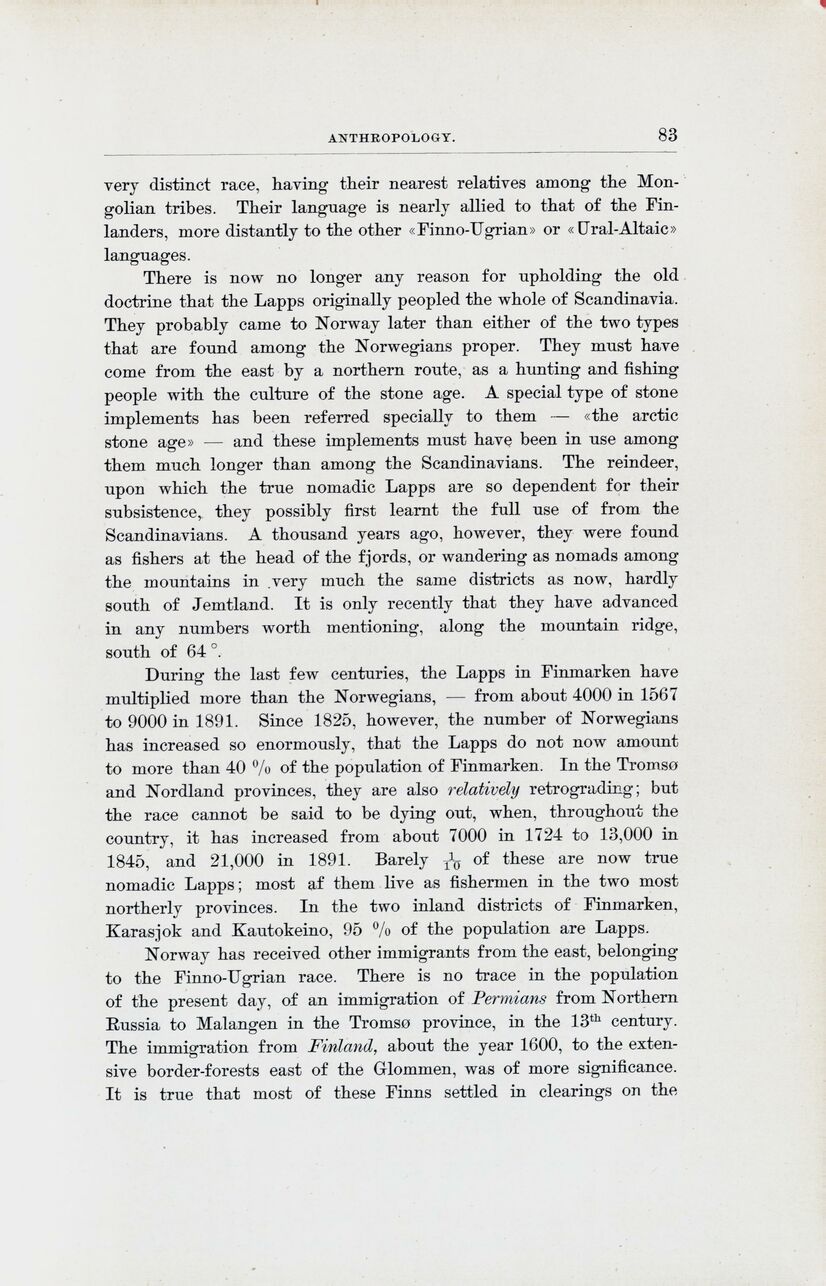
Full resolution (JPEG) - On this page / på denna sida - Anthropology, by Andr. M. Hansen

<< prev. page << föreg. sida << >> nästa sida >> next page >>
Below is the raw OCR text
from the above scanned image.
Do you see an error? Proofread the page now!
Här nedan syns maskintolkade texten från faksimilbilden ovan.
Ser du något fel? Korrekturläs sidan nu!
This page has been proofread at least once.
(diff)
(history)
Denna sida har korrekturlästs minst en gång.
(skillnad)
(historik)
very distinct race, having their nearest relatives among the
Mongolian tribes. Their language is nearly allied to that of the
Finlanders, more distantly to the other «Finno-Ugrian» or «Ural-Altaic»
languages.
There is now no longer any reason for upholding the old
doctrine that the Lapps originally peopled the whole of Scandinavia.
They probably came to Norway later than either of the two types
that are found among the Norwegians proper. They must have
come from the east by a northern route, as a hunting and fishing
people with the culture of the stone age. A special type of stone
implements has been referred specially to them — «the arctic
stone age» — and these implements must have been in use among
them much longer than among the Scandinavians. The reindeer,
upon which the true nomadic Lapps are so dependent for their
subsistence, they possibly first learnt the full use of from the
Scandinavians. A thousand years ago, however, they were found
as fishers at the head of the fjords, or wandering as nomads among
the mountains in very much the same districts as now, hardly
south of Jemtland. It is only recently that they have advanced
in any numbers worth mentioning, along the mountain ridge,
south of 64°.
During the last few centuries, the Lapps in Finmarken have
multiplied more than the Norwegians, — from about 4000 in 1567
to 9000 in 1891. Since 1825, however, the number of Norwegians
has increased so enormously, that the Lapps do not now amount
to more than 40 % of the population of Finmarken. In the Tromsø
and Nordland provinces, they are also relatively retrograding; but
the race cannot be said to be dying out, when, throughout the
country, it has increased from about 7000 in 1724 to 13,000 in
1845, and 21,000 in 1891. Barely ⅒ of these are now true
nomadic Lapps; most af them live as fishermen in the two most
northerly provinces. In the two inland districts of Finmarken,
Karasjok and Kautokeino, 95 % of the population are Lapps.
Norway has received other immigrants from the east, belonging
to the Finno-Ugrian race. There is no trace in the population
of the present day, of an immigration of Permians from Northern
Russia to Malangen in the Tromsø province, in the 13th century.
The immigration from Finland, about the year 1600, to the
extensive border-forests east of the Glommen, was of more significance.
It is true that most of these Finns settled in clearings on the
<< prev. page << föreg. sida << >> nästa sida >> next page >>